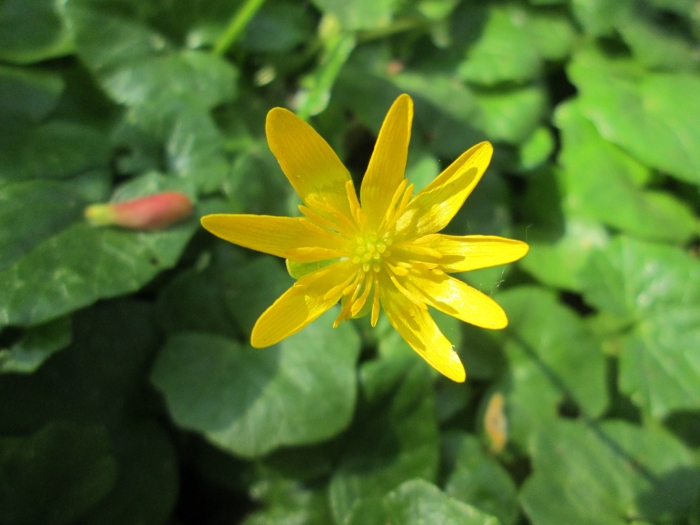Fig Buttercup
(Ficaria verna)
Fig Buttercup (Ficaria verna)
/
/

Andreas Rockstein
CC BY-SA 4.0
Image By:
Andreas Rockstein
Recorded By:
Copyright:
CC BY-SA 4.0
Copyright Notice:
Photo by: Andreas Rockstein | License Type: CC BY-SA 4.0 | License URL: http://creativecommons.org/licenses/by-sa/4.0/ | Rights Holder: Andreas Rockstein | Publisher: iNaturalist | Date Created: 2018-04-21T15:17:28-07:00 |

























Estimated Native Range
Summary
Ficaria verna, commonly known as Fig Buttercup, Lesser Celandine, or Pilewort, is a deciduous herbaceous plant native to Europe and West Asia. It thrives in a variety of habitats including shady, damp woodlands, hedgerows, and stream banks, often forming dense carpets. This plant typically grows to a height of 0.1-0.5 feet (0.03-0.15 meters) and spreads 0.5-1.5 feet (0.15-0.45 meters) wide. Ficaria verna is characterized by its glossy, heart-shaped leaves and bright yellow, buttercup-like flowers that bloom in early spring, providing one of the first nectar sources for pollinators.
The plant is valued for its early spring flowers and can be used as a ground cover in shaded garden areas. However, it can be aggressive and may outcompete other plants, so it should be used with caution. It prefers part shade to full shade and moist, well-drained soils rich in organic matter. While it tolerates a range of soil types, including clay and loam, it does not do well in dry conditions. Ficaria verna is known for its rapid growth and can be divided in autumn or spring to propagate. Gardeners should be aware of its potential to become invasive outside its native range, as it can form dense mats that displace native vegetation.CC BY-SA 4.0
The plant is valued for its early spring flowers and can be used as a ground cover in shaded garden areas. However, it can be aggressive and may outcompete other plants, so it should be used with caution. It prefers part shade to full shade and moist, well-drained soils rich in organic matter. While it tolerates a range of soil types, including clay and loam, it does not do well in dry conditions. Ficaria verna is known for its rapid growth and can be divided in autumn or spring to propagate. Gardeners should be aware of its potential to become invasive outside its native range, as it can form dense mats that displace native vegetation.CC BY-SA 4.0
Plant Description
- Plant Type: Herb
- Height: 0.1-0.5 feet
- Width: 0.5-1.5 feet
- Growth Rate: Rapid
- Flower Color: Yellow
- Flowering Season: Spring
- Leaf Retention: Deciduous
Growth Requirements
- Sun: Part Shade, Full Shade
- Water: Medium
- Drainage: Medium, Slow
Common Uses
Low Maintenance, Water Garden
Natural Habitat
Thrives in shady, damp woodlands, hedgerows, and stream banks in Europe and West Asia
Other Names
Common Names: Lesser Celandine, Pilewort
Scientific Names: , Ficaria verna, Ficaria boryi, Ficaria ledehourii, Ficaria pumila, Ficaria verna subsp. bulbilifera ×.L×ve &, Ficaria verna subsp. calthifolia, Ranunculus ficaria f. podolicus, Ranunculus ficaria subsp. bulbifer, Ranunculus ficaria subsp. nudicaulis
GBIF Accepted Name: